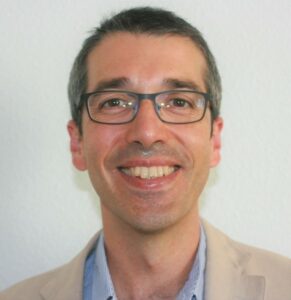 Organization/Department
Organization/Department
Corporate Manager “Viscofan BioEngineering”
Biography
Lluis Quintana is chemist (2003) and PhD in bioengineering (2009) by the Institut Químic de Sarrià (Barcelona, Spain). He also holds an MBA (2013) by the IESE Business School. He is specialised in business development in the biomedical area. Since December 2015 Dr. Quintana is Corporate Manager in Viscofan BioEngineering, the biomedical unit of the Viscofan Group. He has experience in collagen for biomedical applications, regulatory aspects, clinical development and entrepreneurship in biotech companies, such as Sagetis Biotech (www.sagetis-biotech.com), which received in 2009 an award of the Barcelona Council to the best entrepreneurial initiative of the year. Dr. Quintana is coordinator of the TriAnkle EU project (www.triankle.eu).
Title of Talk
TRIANKLE, 3D BIOPRINTED PERSONALISED SCAFFOLDS FOR TISSUE REGENERATION OF ANKLE JOINT
Abstract
TRIANKLE is an innovative medical application that aims to improve the junctions and cartilages (and therefore, the overall movement) of the ankle by introducing a tailored, 3D bio-printed collagen-and-gelatin based structure in the affected area.
Why TriAnkle? In the last 30 years, very little progress has been made in the ability to regenerate tendons and ligaments and more in the ability to regenerate cartilage. But they are still, together with muscle injuries, the main causes of long-term sick leave in elite athletes and one of the main causes of loss of mobility in elderly people.
How does it work? Collagen is not only the most abundant protein in the human body, but it is also an integral component in the structure of the connective tissues. By introducing a collagen-based implant with regenerative factors, these tissues can heal vastly faster, reducing the recovery time down to 50%, as well as increasing the recovery ratios of ankle joints up to 15%.
Who will benefit from this project? There are two case-studies in which TRIANKLE can be implemented: Osteochondral cartilage injuries and partial ruptures of Achilles tendon. Within these medical problems, TRIANKLE is designed to adapt to anyone who needs it, ranging from young athletes to seniors. Athletes frequently suffer these kinds of injuries and are exposed to progressive joint degeneration, but also up to 500 million people in the world are adversely affected by osteoarthritis, especially elderly population. The application of the TriAnkle therapies will enable to improve social reintegration of patients with diseases of weight-bearing joints by improving the employability and work performance of people with high physical activity, such as construction workers, physiotherapists, or athletes. Fast and good recovery is of high economic and social importance for these patients.
A personalized approach for a patient-centered vision: TRIANKLE seeks to fill a critical gap in treatment as well as a faster and enhanced healing process. With that objective, the project will develop therapies that adapt to different types patients. Their needs will be assessed through workshops that will enable different types of patients to guide in the innovation process. To satisfy the patients’ needs TriAnkle will use 3D Printing technologies that can be in some cases printed in a patient-specific manner. Additionally, the project will use combinations including higher or lower complexity in the formulation (including growth factors and/or stem cells) to adapt to the needs of each patient group. Elite athletes or osteoarthritic patients will have very different healing needs that translate into different products.
The project, financed by the EU and aimed at improving the quality of the life of millions, is possible thanks to a vast number of partners. Viscofan BioEngineering and Cellink are the industry partners, and count on the help of various associates, such as FC Barcelona Innovation Hub, Osteoarthritis Foundation International (OAFI), Fraunhofer IGB, University of Stuttgart, Universidad del País Vasco (UPV), Eindhoven University of Technology, Leitat technological center, Cambridge Nanomaterials Technology (CNT), Gradocell and Fundació Clinic per a la Recerca Biomèdica.
